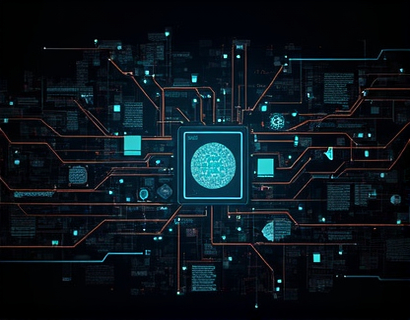Advanced Cybersecurity Strategies for High-Net-Worth Individuals, Celebrities, and Entrepreneurs in the Cryptocurrency Sector
In the rapidly evolving digital landscape, high-net-worth individuals, celebrities, and entrepreneurs face unique cybersecurity challenges, particularly when it comes to protecting their cryptocurrency assets. The cryptocurrency sector, while offering unprecedented opportunities for wealth creation and financial independence, also presents a lucrative target for cybercriminals. This article delves into advanced digital defense strategies tailored for these high-risk groups, focusing on safeguarding their digital assets and personal information against sophisticated cyber threats.
Understanding the Threat Landscape
The first step in developing effective cybersecurity measures is understanding the threat landscape. Cybercriminals employ a variety of tactics to target high-value individuals, including phishing attacks, malware, ransomware, and sophisticated social engineering techniques. For cryptocurrency holders, the risk is compounded by the pseudonymous nature of blockchain transactions, which can make it difficult to trace and recover stolen funds.
High-net-worth individuals and celebrities often have a larger digital footprint, making them more visible targets. Their wealth and public status can attract attention from organized crime groups and individual hackers. Entrepreneurs in the cryptocurrency space, especially those involved in initial coin offerings (ICOs) or blockchain startups, may face targeted attacks due to the innovative and often unregulated nature of their businesses.
Tailored Cybersecurity Solutions
Given the unique risks faced by these groups, it is essential to implement tailored cybersecurity solutions. These solutions should be comprehensive, multi-layered, and continuously updated to counter emerging threats. Here are some key strategies:
- Advanced Authentication Mechanisms: Implement multi-factor authentication (MFA) for all accounts, especially those accessing cryptocurrency wallets and exchanges. Biometric authentication, such as fingerprint or facial recognition, can add an extra layer of security.
- Secure Wallet Management: Use hardware wallets for storing large amounts of cryptocurrency. Hardware wallets provide offline storage, reducing the risk of online attacks. Ensure that the wallet software is from a reputable provider and keep it updated.
- Regular Software Updates: Keep all devices and software up to date with the latest security patches. This includes operating systems, web browsers, and cryptocurrency applications. Automated updates can help ensure that security vulnerabilities are addressed promptly.
- Network Security: Use robust firewalls and intrusion detection systems to monitor and protect network traffic. Segment your network to isolate sensitive systems and data. Implement a virtual private network (VPN) for secure remote access.
- Data Encryption: Encrypt sensitive data both at rest and in transit. Use strong encryption protocols such as AES-256 for data storage and TLS for data transmission. This makes it difficult for unauthorized parties to access sensitive information even if intercepted.
- Employee Training and Awareness: Conduct regular cybersecurity training sessions for staff, focusing on recognizing phishing attempts, safe browsing practices, and secure password management. Create a culture of security awareness within the organization.
Protecting Against Specific Threats
Cryptocurrency-specific threats require specialized defense strategies. Here are some advanced techniques to mitigate these risks:
Phishing and Social Engineering
Phishing attacks are a common method used by cybercriminals to steal login credentials and access cryptocurrency accounts. To protect against these attacks:
- Use email filters and spam detection tools to identify and block suspicious emails.
- Educate users on the signs of phishing emails, such as suspicious links, poor grammar, and urgent requests for personal information.
- Implement domain-based message authentication, reporting, and conformance (DMARC) to verify the authenticity of emails.
- Use secure communication channels, such as encrypted messaging apps, for sensitive discussions related to cryptocurrency transactions.
Smart Contract Vulnerabilities
Smart contracts, while innovative, can contain vulnerabilities that malicious actors can exploit. To mitigate risks:
- Conduct thorough audits of smart contracts by reputable security firms before deployment.
- Use formal verification methods to mathematically prove the correctness of smart contract code.
- Implement monitoring tools to detect and respond to unusual activity on smart contracts in real-time.
- Keep a reserve of funds in cold storage to mitigate the impact of any potential smart contract breaches.
Decentralized Exchange (DEX) Risks
DEXs offer a decentralized way to trade cryptocurrencies, but they also come with unique risks:
- Use reputable and well-audited DEX platforms.
- Be cautious of unsolicited transactions or requests for private keys.
- Use secure and unique usernames and passwords for DEX accounts.
- Enable MFA for all DEX accounts to add an extra layer of security.
Incident Response and Recovery
Despite the best preventive measures, cybersecurity incidents can still occur. Having a robust incident response plan is crucial for minimizing damage and recovering quickly. Key components of an incident response plan include:
- Incident Detection: Implement monitoring tools to detect unusual activity or security breaches in real-time. Set up alerts for suspicious transactions or access attempts.
- Containment: Isolate affected systems to prevent the spread of malware or unauthorized access. Disconnect from the network if necessary.
- Eradication: Remove malware and patch vulnerabilities. Restore systems from clean backups if needed.
- Recovery: Gradually bring systems back online, monitoring for any signs of re-infection. Verify the integrity of all systems and data.
- Post-Incident Analysis: Conduct a thorough review of the incident to identify weaknesses and improve security measures. Document lessons learned and update the incident response plan accordingly.
Continuous Monitoring and Compliance
Continuous monitoring is essential for maintaining a strong security posture. This involves:
- Regular security audits and penetration testing to identify and address vulnerabilities.
- Real-time monitoring of network traffic and system logs for unusual activity.
- Compliance with relevant regulations and standards, such as the General Data Protection Regulation (GDPR) and the Payment Card Industry Data Security Standard (PCI DSS), to ensure legal and operational integrity.
- Use of security information and event management (SIEM) tools to aggregate and analyze security data from multiple sources.
Building a Security-Conscious Culture
Ultimately, the most effective cybersecurity strategy involves everyone in the organization. Building a security-conscious culture can significantly reduce the risk of breaches:
- Lead by example: Executives and management should demonstrate a commitment to cybersecurity through their actions and decisions.
- Encourage open communication about security concerns and incidents. Create a safe environment where employees feel comfortable reporting potential issues.
- Provide resources and support for employees to stay informed about the latest cybersecurity threats and best practices.
- Recognize and reward employees who contribute to enhancing the organization's security posture.
By implementing these advanced digital defense strategies, high-net-worth individuals, celebrities, and entrepreneurs can better protect their cryptocurrency assets and personal information from sophisticated cyber threats. The key is to stay vigilant, adapt to new challenges, and foster a culture of security awareness within their organizations.










































